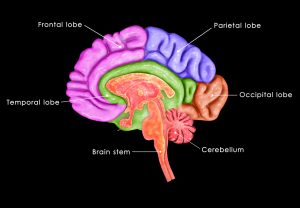Lately, we’ve noticed a growing trend in our stroke litigation practice. There are more cases involving the misdiagnosis of brain stem strokes, resulting in significant disabling brain damage to patients.
Brain stem strokes comprise a relatively small percentage of strokes. They occur when blood flow to the brain stem is significantly reduced due to a clot, blood vessel tear, blood vessel occlusive disease, etc.
 The brain stem sits above the spinal cord and connects it to the brain. Only half-inch in diameter, the brain stem controls the basic activities of your central nervous system including your heartbeat, blood pressure, breathing, speech, swallowing, eyesight, and hearing. Brain stem strokes can impair any or all of these functions. When blood flow to the brain stem stops, the brain stem tissue begins to die and brain function is lost along with it. In severe cases, patients are left with Locked-in syndrome; they cannot move anything but their eyes. They are alert, but cannot communicate, use their arms or legs, or take care of their basic needs.
The brain stem sits above the spinal cord and connects it to the brain. Only half-inch in diameter, the brain stem controls the basic activities of your central nervous system including your heartbeat, blood pressure, breathing, speech, swallowing, eyesight, and hearing. Brain stem strokes can impair any or all of these functions. When blood flow to the brain stem stops, the brain stem tissue begins to die and brain function is lost along with it. In severe cases, patients are left with Locked-in syndrome; they cannot move anything but their eyes. They are alert, but cannot communicate, use their arms or legs, or take care of their basic needs.
Symptoms
Patients with blood stem strokes exhibit coordination and vision problems. Other symptoms include nausea, vomiting, headaches or passing out. Symptoms are more subtle and complex than classic stroke symptoms – such as a slurred speech, a drooping face weakness of one side of the body. Brain stem strokes are often difficult to diagnose because they mimic other conditions.
Improving Outcomes
Recognizing symptoms of stroke and obtaining immediate evaluation at an emergency room –not a walk-in clinic – can improve outcomes. If you think your loved one is having a stroke, ask that a stroke code be called and insist on being seen by a neurologist immediately. Having a plan and identifying a comprehensive stroke care center in your city before you need one is also important.
Treatment for brain stem strokes includes the clot-busting drug, tPA, or intra-arterial interventions. The faster blood flow is restored to the brain, the better the outcome. Time is brain.


